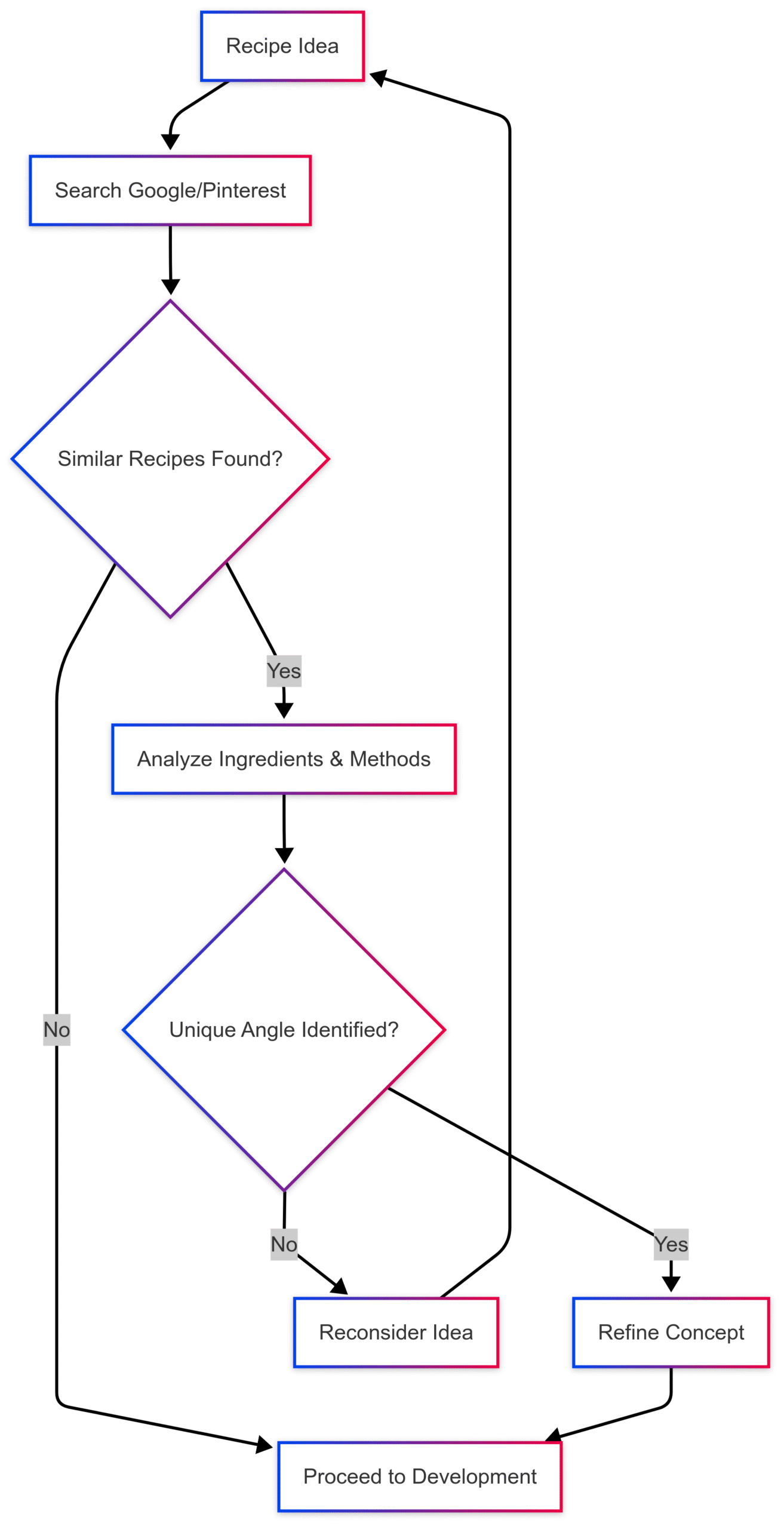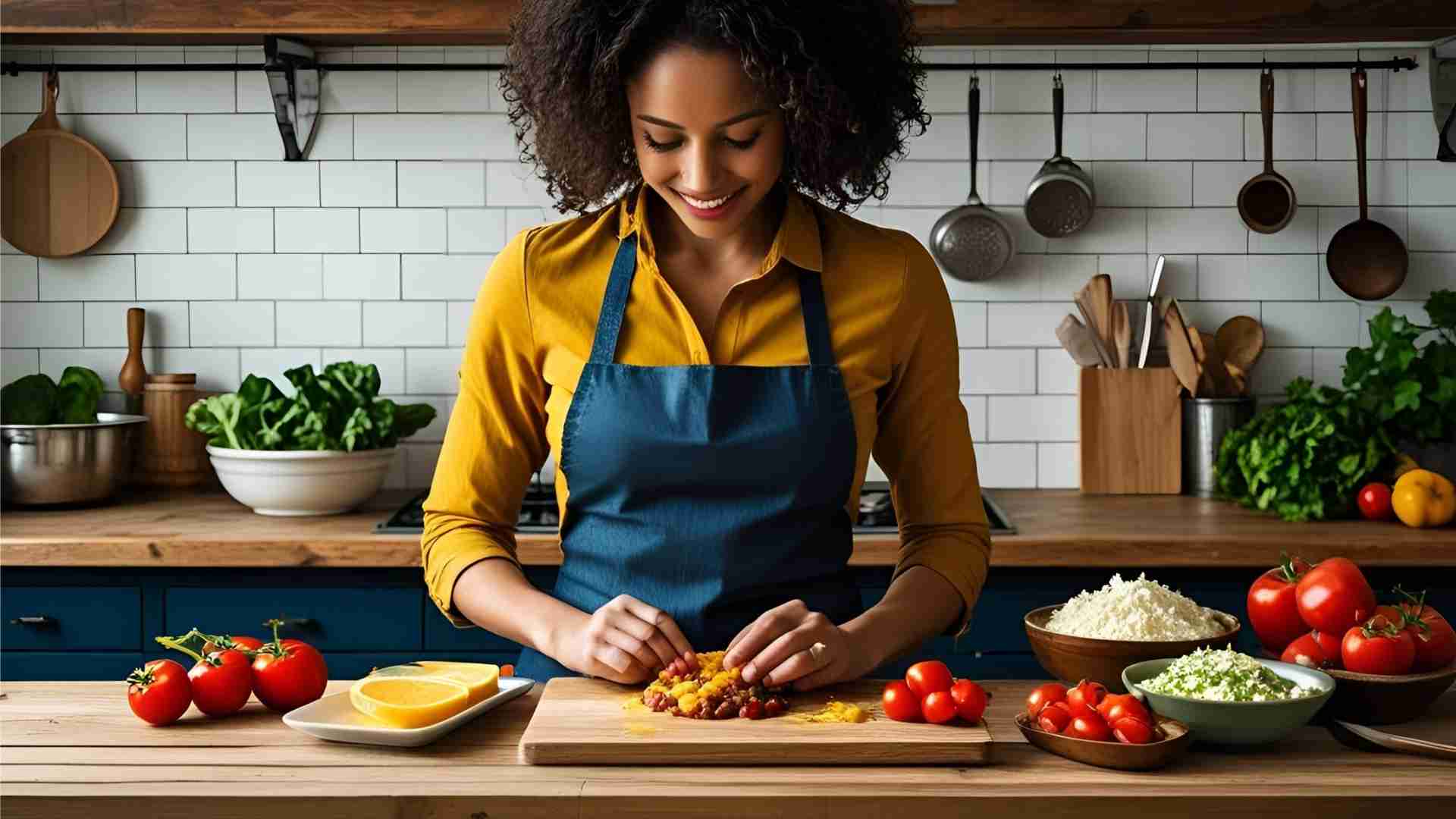Learn how to develop original recipes from scratch with expert tips on finding inspiration, experimenting, and documenting. Create unique dishes effortlessly.
Creating an original recipe is a rewarding blend of creativity, experimentation, and precision. Whether you’re a home cook, a food blogger, or an aspiring chef, developing a recipe from scratch allows you to craft dishes that reflect your unique culinary voice. This comprehensive guide outlines a structured yet flexible approach to recipe development, drawing from diverse culinary perspectives and evidence-based techniques. By balancing inspiration, experimentation, and meticulous documentation, you can create recipes that are both delicious and reproducible. Below, we explore the process in detail, offering practical steps, tips, and strategies to help you succeed.
Step 1: Finding Inspiration
The foundation of any great recipe is inspiration. This phase is about exploring ideas, flavors, and techniques to spark creativity. Inspiration can come from various sources, and the key is to remain open to new experiences and perspectives.
Sources of Inspiration
- Cookbooks and Food Blogs: Browse cookbooks, magazines, and online recipe databases for ideas. Books like The Flavor Bible by Karen Page and Andrew Dornenburg or Salt, Fat, Acid, Heat by Samin Nosrat offer insights into flavor pairings and cooking techniques.
- Restaurants and Cafes: Dining out exposes you to innovative presentations and flavor combinations. Pay attention to how chefs plate dishes or combine ingredients in unexpected ways.
- Personal Experiences: Reflect on childhood meals, family recipes, or dishes you enjoyed while traveling. These personal connections add authenticity to your creations.
- Seasonal Ingredients: Visit farmers’ markets to discover fresh, seasonal produce. For example, spring asparagus or summer tomatoes can inspire vibrant, timely dishes.
- New Techniques or Tools: Experiment with unfamiliar cooking methods, such as sous vide or fermentation, or use new kitchen tools like a high-powered blender to unlock creative possibilities.
- Social Media and Trends: Platforms like Pinterest or Instagram showcase trending dishes and innovative ideas. Following chefs or food influencers can spark new concepts.
- Dietary Needs: Adapting recipes for specific diets (e.g., vegan, gluten-free) can lead to creative breakthroughs, such as a grain-free granola made with olive oil and brown sugar.
Practical Tips for Inspiration
- Keep a Recipe Journal: Record ideas in a notebook, phone app, or project management tool like Asana. Jot down flavor combinations, techniques, or dishes that intrigue you.
- Engage with Your Audience: If you’re a food blogger, ask readers what they’d like to see. Community feedback can guide your creative process.
- Explore Diverse Cuisines: Try cooking dishes from unfamiliar culinary traditions to broaden your perspective. For example, combining New Nordic techniques with Japanese ramen can yield unique results.
Example: Inspiration in Action
Consider a chef in San Francisco who developed a clam-based ramen inspired by New Nordic cuisine. The idea stemmed from dining at restaurants that emphasized local, foraged ingredients and experimenting with fermentation techniques. This fusion of culinary traditions led to a dish that was both innovative and deeply personal.
Step 2: Research and Uniqueness
Once you have an idea, research is crucial to ensure your recipe is original and adds value to the culinary landscape. This step involves validating your concept and refining it to stand out.
Conducting Research
- Search for Existing Recipes: Use Google, Pinterest, or recipe databases to check if similar dishes exist. For example, if you’re developing a vegan banana-brownie cake, search for existing recipes to identify gaps or opportunities.
- Evaluate Your Unique Angle: Ask yourself what makes your recipe distinct. Does it use a novel ingredient, simplify a complex technique, or cater to a specific dietary need? For instance, a nut-free pesto or a no-mess oven-fried Chicken Parmesan could set your recipe apart.
- Compare Techniques and Ingredients: Analyze similar recipes to understand their ingredient ratios, cooking methods, and presentation. Take notes on what works and what you can improve.
Ethical Considerations
While recipes themselves are not copyrightable under U.S. law, the accompanying text, headnotes, or photos may be. To create an original recipe:
- Change at least three major ingredients or steps from any source of inspiration.
- Write the recipe in your own voice, reflecting your personality and style.
- Provide proper attribution if inspired by another source. For example, include “Adapted from [Source]” or “Inspired by [Source]” with a link to the original recipe.
Chart: Recipe Research Process

This chart illustrates the iterative process of researching and refining a recipe idea to ensure originality.
Step 3: Experimentation (Exploration and Exploitation)
Recipe development is a balance of exploration (creative experimentation) and exploitation (evidence-based refinement). This dual approach ensures your dish is both innovative and polished.
Exploration: Unleashing Creativity
Exploration is about trying new ingredients, techniques, or flavor combinations without worrying about precision. This phase is unstructured and allows for spontaneity.
- Try New Techniques: Experiment with methods like grilling, braising, or molecular gastronomy. For example, roasting barley koji for ice cream adds a nutty depth.
- Combine Cuisines: Blend elements from different culinary traditions, such as using fermentation in ceviche instead of traditional citrus curing.
- Cook with Others: Collaborate with friends or fellow chefs to gain new perspectives. Different cooks may approach the same dish with unique ingredient choices.
- Recreate Dishes: Attempt to replicate a dish you’ve seen or tasted without a recipe, using your intuition to guide you.
Tip: Allocate 1/3 to 2/3 of your development time to exploration, depending on the dish’s complexity. This ensures you explore enough possibilities before narrowing your focus.
Exploitation: Refining the Recipe
Once you’ve settled on a concept, exploitation involves rigorous testing to perfect the dish. A/B testing is a powerful method for this phase, where you compare two versions of a recipe by changing one variable at a time.
- A/B Testing: Test variations of a single component, such as the amount of salt or cooking time, to isolate its impact. For example, when developing ramen, test different ratios of clam broth and dashi.
- Isolate Components: Test individual elements (e.g., a sauce or breading) before combining them into the full dish to save time and ingredients.
- Set Deadlines: Avoid over-iterating by setting a clear end date for testing. Perfection is elusive, and real-world feedback is valuable.
- Seek Feedback: Share test batches with friends, family, or colleagues to gather diverse perspectives. For example, serve two versions of a dish and ask which is preferred.
Table: A/B Testing Example for Oven-Fried Chicken Parmesan
| Variable Tested | Version A | Version B | Outcome |
|---|---|---|---|
| Breading Type | Panko | Cornflake | Panko crispier |
| Oven Temperature | 400°F | 425°F | 425°F faster, evenly cooked |
| Seasoning Ratio | 1 tsp salt | 1.5 tsp salt | 1.5 tsp enhances flavor |
This table shows how A/B testing isolates variables to optimize a recipe.
Step 4: Documentation and Writing
Documenting your recipe is critical for reproducibility and sharing. A well-written recipe is clear, concise, and engaging, guiding the reader through each step with confidence.
Documenting the Process
- Record Everything: Note exact ingredient quantities, cooking times, temperatures, and observations during testing. Use a recipe testing template to stay organized.
- Track Sensory Cues: Include visual, auditory, or olfactory indicators, such as “sauté until onions are translucent” or “bake until golden brown.”
- Test Multiple Times: Prepare the recipe at least three times to ensure consistency. Verify that instructions are accurate and repeatable.
Writing the Recipe
- Use Clear Instructions: Write steps in a logical order, using simple language. For example, “Chop the vegetables, then sauté in olive oil for 5 minutes.”
- Incorporate Your Voice: Infuse the recipe with your personality to make it engaging. For instance, “Toss in the garlic—don’t be shy, it’s the star of the show!”
- Include Tips and Variations: Offer substitutions (e.g., “Swap almonds for walnuts”) or alternative methods (e.g., “Grill instead of bake for a smoky flavor”).
- Add a Headnote: Write a brief introduction explaining the recipe’s inspiration or unique qualities. This builds a connection with the reader.
Example Recipe: Fudgy Vegan Banana-Brownie Cake
Ingredients:
- 3 ripe bananas, mashed (about 1.5 cups)
- 1 cup almond butter
- 0.5 cup cocoa powder
- 0.25 cup maple syrup
- 1 tsp vanilla extract
- 0.5 tsp baking soda
- Pinch of salt
Instructions:
- Preheat oven to 350°F. Grease an 8×8-inch baking pan.
- In a large bowl, combine mashed bananas, almond butter, and maple syrup. Stir until smooth.
- Add cocoa powder, vanilla, baking soda, and salt. Mix until fully incorporated.
- Pour batter into the prepared pan and smooth the top.
- Bake for 25–30 minutes, until a toothpick inserted in the center comes out clean.
- Let cool for 10 minutes before slicing. Serve warm or store in an airtight container for up to 3 days.
Tips:
- Swap almond butter for peanut butter for a richer flavor.
- Store in the fridge for a fudgier texture.
Step 5: Presentation and Sharing
A well-presented recipe enhances its appeal and accessibility. This step involves photography, sharing, and potentially monetizing your work.
Food Photography
- Capture Appealing Images: Use natural light and simple backgrounds to highlight the dish. For example, photograph a vibrant ceviche against a clean white plate to emphasize its colors.
- Showcase Texture and Detail: Close-up shots of a crunchy granola or a fudgy brownie cake can entice readers.
Sharing Your Recipe
- Blog or Social Media: Post your recipe on a personal blog, Instagram, or Pinterest with a compelling description and high-quality photos.
- Cookbooks or Publications: Submit recipes to magazines or compile them into a cookbook for broader reach.
- Community Feedback: Engage with readers by responding to comments or incorporating their suggestions into future recipes.
Monetization Opportunities
If you’re developing recipes for a client, such as a health coach, consider the following:
- Proposal Components: Include a detailed description of the recipe development process, timeline, and deliverables (e.g., 5 original recipes per month). Specify whether you’ll cover ingredient costs or if the client will reimburse you.
- Pricing: Pricing varies based on experience and market. For beginners, $50–$100 per recipe is reasonable, covering development and testing. Experienced developers may charge $200–$500 per recipe. Check with the client about ingredient budgets.
- Contracts: Clarify ownership and usage rights. For example, will the recipes be exclusive to the client, or can you share them elsewhere?
Continuous Improvement
Recipe development is an ongoing journey. Even after sharing a recipe, you can:
- Iterate Based on Feedback: Incorporate reader or client feedback to refine the recipe. For example, if a dish is too salty, adjust the seasoning in future versions.
- Experiment with Variations: Test new ingredients or techniques to create spin-offs, such as a gluten-free version of a brownie cake.
- Stay Inspired: Continue exploring new cuisines, tools, and trends to keep your recipes fresh and relevant.
Conclusion
Developing and writing a recipe from scratch is a dynamic process that blends creativity, research, and precision. By finding inspiration, conducting thorough research, experimenting through exploration and exploitation, documenting meticulously, and presenting your work effectively, you can create recipes that resonate with your audience. Whether you’re cooking for yourself, a blog, or a client, this approach ensures your dishes are innovative, reproducible, and delicious. Embrace the iterative nature of recipe development, and let your culinary voice shine.
Please share these How to Develop and Write a Recipe from Scratch with your friends and do a comment below about your feedback.
We will meet you on next article.
Until you can read, Tropical Mango and Coconut Ice Cream Sandwiches
